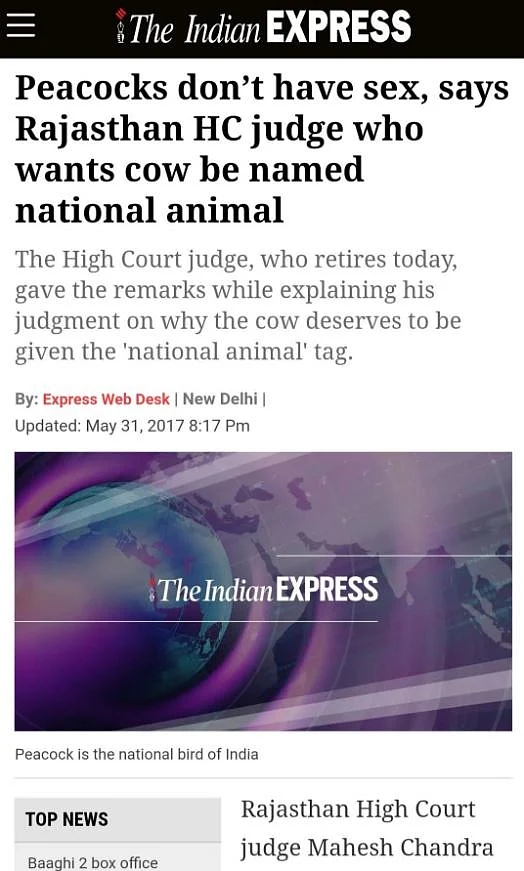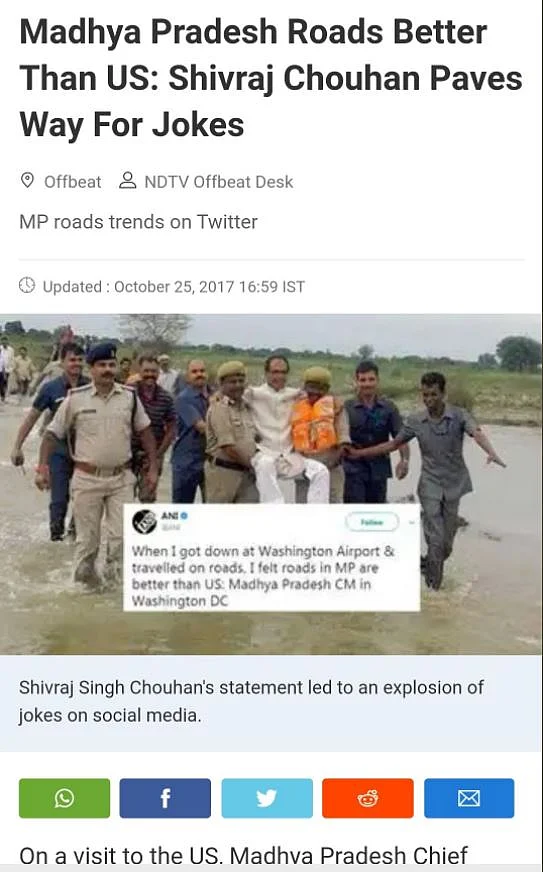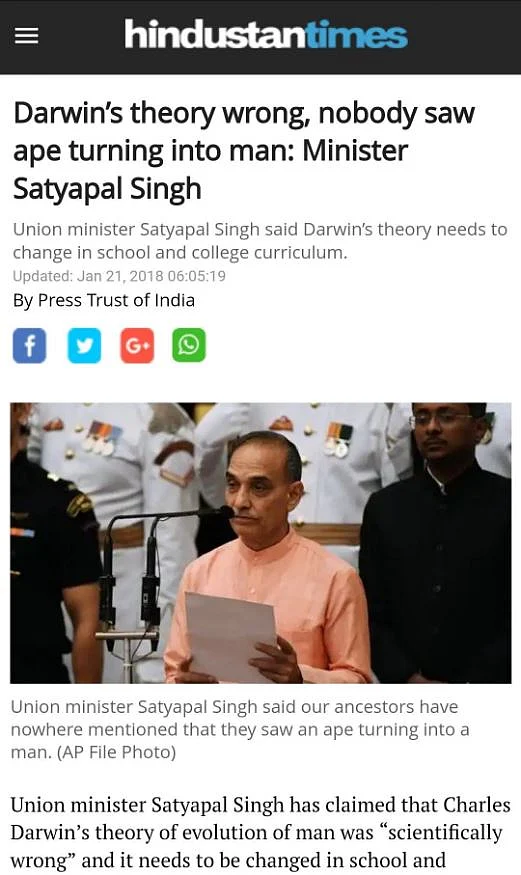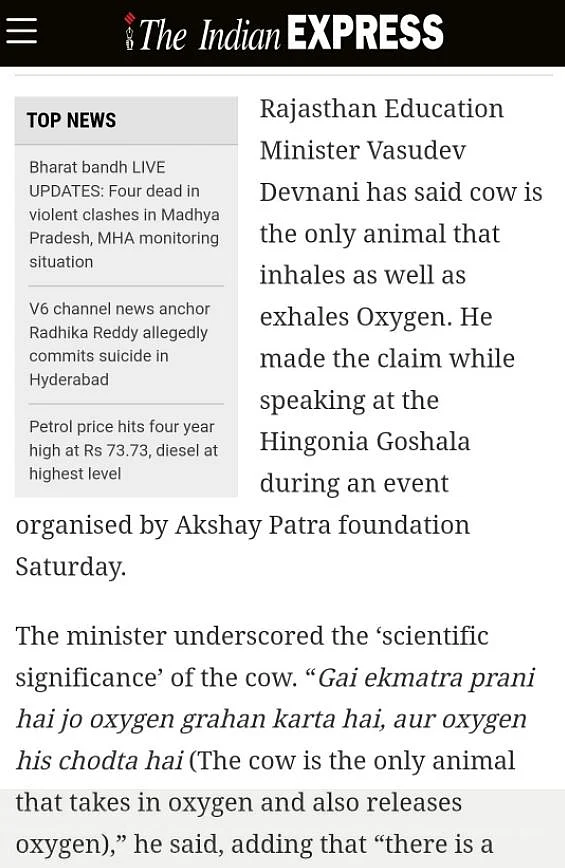Fifteen hours – that’s how long it took the Ministry of Information and Broadcasting under Smriti Irani to issue and withdraw a fake news directive. The decision to withdraw it came after the Prime Minister’s Office reportedly ordered them to do so.
The interim 15-hour period saw a lot of drama – outrage on social media over the directive, fiery exchanges between the minister and senior journalists, and voices supporting the move.
So, what's the chain of events that led to this massive U-turn by the Centre? Here’s a quick recap.
9:03 pm, 2 April:
I&B Releases ‘Controversial’ Circular
In a circular issued at 9:03 pm on Monday, 2 April, the I&B ministry said the government has “amended” the Guidelines for Accreditation of Journalists. On receiving a complaint, the Press Council of India and the News Broadcasters Association were mandated to determine if the news was fake in 15 days, the circular read.
As per the amended guidelines for the accreditation of journalists, if the publication or telecast of fake news is confirmed, the accreditation of that journalist would be suspended for a period of six months in the first violation and for one year in case of a second violation.
In case of a third violation, his or her accreditation would be cancelled permanently, the information and broadcasting ministry said in a release.
9:03 pm Onwards, 2 April:
Journalists Lash Out on Social Media
Minutes after the circular was released, it spread like wildfire on Twitter, with journalists lashing out at the Centre for the move. From calling it a media gag, to the order being called the “death of news”, several journalists expressed their disappointment and anger.
11:42 pm, 2 April:
Irani Starts Replying to a Few Journalists, ‘Justifies’ Move
Almost three hours after the release of the circular, Irani stared responding to some of the tweets.
Senior journalist Suhasini Haidar criticised the government’s move saying that it aimed to “penalise” those belonging to the mainstream media, while ignoring websites that “openly flouted” journalistic ethics. Haidar added “some ministers” were also quoted by these websites.
Irani shot a reply to Haidar in four minutes flat. Her reply explicitly stated that the rules cannot be enforced for online news portal until a regulatory framework is instituted for the same.
But it did not stop there, with Haidar simply calling the directive “not fair”. This earned a stern response from the minister who said that the journalist “should support ethical journalism and not fake news”.
Soon after that, NDTV’s Sreenivasan Jain joined in, calling out another Bharatiya Janata Party minister for supporting Postcard News. He also asked that if the mandate was for “self-regulation”, why was the government passing orders?
Again, Irani was quick to respond, asking the journalist to “study” the accredidation guidelines.
12:06 am, 3 April:
Not Just to Journalists, Irani Responds to Congress Too
Senior leader of the Indian National Congress, Ahmed Patel “appreciated” the move but raised some pertinent questions. Reiterating her stand on the committee of editors, journalists and representatives of PCI & NBA, Irani added that both bodies were not “controlled or operated” by the Government of India.
5:11 am, 3 April: 13 Ministers Mentioned In the ‘True Picture’ Report
In an article shared by at least 13 Union ministers and several senior BJP leaders in the past two days, a website called thetruepicture.in claims to have busted “four major fake news stories”.
The article, also tweeted by Irani just a day before she issued the controversial fake news directive, claims two stories published by The Indian Express as fake. However, when the national daily did a background check on the founders of thetruepicture.in, some intriguing, and real news came to the fore.
10:10 am, 3 April:
A Tweet About BJP Leaders Spreading ‘Fake News’ Goes Viral
In a sarcastic tweet, journalist Mahim Pratap Singh pointed out instances where BJP leaders featured in “real news”, questioning if media personnel will lose their accreditation while reporting on it.
11:35 am, 3 April:
Irani Retweets Times Group’s Vineet Jain
On Tuesday, 3 April, Times Group’s Managing Director Vineet Jain tweeted that fake news was “unacceptable”, and that the Editors Guild and NBA should define fake news.
Soon after, Irani retweeted Jain’s tweet indicating that she endorsed his views.
12:17 pm, 3 April:
Irani Tweets Seeking Suggestions
While Irani defended her ministry’s move on Twitter till late on Monday night, Tuesday morning saw her stating that “several journalists” have reached out to her with positive suggestions and that the I&B Ministry was “more than happy” to engage with journalist bodies.
12:45 pm, 3 April:
PMO Orders Withdrawal of ‘Gag Order’
Just minutes after the I&B minister invited suggestions on Twitter, news broke that Prime Minister Narendra Modi has ordered the withdrawal of the directive. The PMO said the matter must be addressed by the Press Council of India, reported ANI.
6:02 pm, 3 April: Editors’ Guild Condemns Irani's Move
In a strongly-worded statement, the Editors’ Guild of India condemned the directive. The statement read:
It would have opened door for frivolous complaints to harass journalists and organisations to fall in line.
Further, though the Guild acknowledged the PMO’s intervention in the issue, it stated that it was deeply disturbed by the fact that “faith continues to be reposed on the Press Council of India to deliver justice on such issues”.




